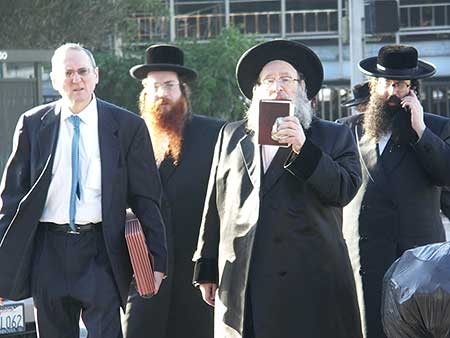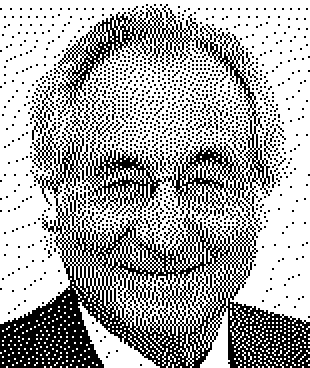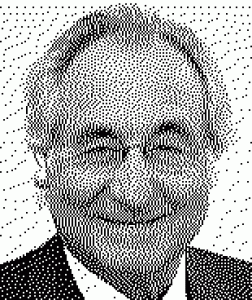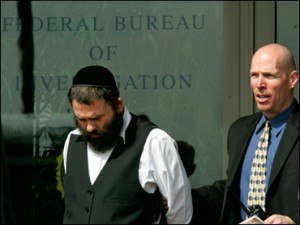 FBI: Van Pelt took $10,000 bribe for Waretown development:
FBI: Van Pelt took $10,000 bribe for Waretown development:
Assemblyman Daniel M. Van Pelt, R-Ocean, took $10,000 in bribes to help move a development along in Waretown, according to the FBI.
Van Pelt was arrested this morning in a wide-sweeping corruption probe by the FBI. A total of 44 officials and religious leaders from New Jersey and New York were also arrested.
Also arrested was Jeffrey Williamson, a Lakewood housing inspector who was charged with taking more than $15,000 in bribes over the last two years.
Van Pelt, the former mayor of Waretown, is accused of taking a $10,000 bribe from a cooperating witness who posed as a developer. The money was for Van Pelt’s “assistance” in getting a proposed multi-unit, multi-use development approved in Waretown, according to the FBI complaint filed in U.S. District Court.
Disgraced real-estate mogul Solomon Dwek, 36, is apparently a key witness in the FBI corruption cases today.
In court documents, the FBI referred to a “cooperating witness” who was arrested in May 2006 on bank fraud charges. Dwek was charged with bank fraud that month when he tried to cash a bogus $25 million check.
The FBI this morning made the arrests as part as an international money laundering probe, a spokesman for the U.S. Attorney’s Office said.
The subjects of the arrests also include religious leaders from the Syrian Jewish enclaves in Brooklyn, Deal and Elberon. Sources said the IRS and FBI this morning seized documents from the Deal Yeshiva and the Ohel Yaacob synagogue on Ocean Avenue in Deal.
The Deal Yeshiva is a religious school which teaches children in the Sephardic Jewish tradition, The Yeshiva has two separate divisions: a boys’ school on Logan Road in Ocean Township and a girls’ school on Wall Street in West Long Branch.
The school was founded more than 20 years ago by Rabbi Isaac Dwek and Raizel Dwek, the parents of Solomon Dwek, of Ocean Township. Rabbi Dwek was the school’s president, and Raizel was its treasurer, until 2006, when their son’s real estate empire began to crumble after Dwek deposited a bad $25.2 million check at a drive-through window at the PNC Bank in Eatontown.
The probe also involves international trafficking in body parts, sources said.
Those charged include:
• Peter Cammarano III, the newly elected mayor of Hoboken and an attorney, charged with accepting $25,000 in cash bribes, including $10,000 last Thursday, from an undercover cooperating witness.
• Assemblyman L. Harvey Smith, D-Hudson, and recent mayoral candidate in Jersey City, charged along with an aide of taking $15,000 in bribes to help get approvals from high-level state agency officials for building projects.
• Assemblyman Daniel Van Pelt, R-Ocean, charged with accepting a $10,000 bribe.
• Dennis Elwell, mayor of Secaucus, charged with taking a $10,000 cash bribe.
• Anthony Suarez, mayor of Ridgefield and an attorney, charged with agreeing to accept a $10,000 corrupt cash payment for his legal defense fund.
• Louis Manzo, the recent unsuccessful challenger in the Jersey City mayoral election and former assemblyman, and his brother and political advisor Robert Manzo, both with taking $27,500 in corrupt cash payments for use in Louis Manzo’s campaign.
• Leona Beldini, the Jersey City deputy mayor and a campaign treasurer, charged with taking $20,000 in conduit campaign contributions and other self-dealing in her official capacity.
• Eliahu Ben Haim, of Long Branch, N.J., the principal rabbi of Congregation Ohel Yaacob in Deal, charged with money laundering of proceeds derived from criminal activity.
• Saul Kassin, of Brooklyn, N.Y., the chief rabbi of a synagogue in Brooklyn, New York, charged with money laundering of proceeds derived from criminal activity.
• Edmund Nahum, of Deal, the principal rabbi of Deal Synagogue, charged with money laundering of proceeds derived from criminal activity.
• Mordchai Fish, of Brooklyn, N.Y., a rabbi at a synagogue in Brooklyn, charged with money laundering of proceeds derived from criminal activity. His brother, also a rabbi, was charged as well.
Mayors, rabbis arrested in corruption probe:
The FBI began the large operation three years ago. The public corruption and money-laundering probes were separate but linked by common players, a source close to the investigation said.
The source described the alleged public corruption as “straight bribery” — cash-filled envelopes exchanged for political influence.
The other investigation centered on a group of rabbis who allegedly laundered tens of millions of dollars through their religious organizations for a fee, according to the source.
MONEY IN NEW YORK; The Sy Empire – New York Times:
At the end of this past August, Jakie Kassin, a community leader, grandson of the author of the Edict and son of the current chief rabbi, received a laminated wooden plaque measuring 4 feet by 2 feet for his inspection. It was the most recent incarnation of the Edict. The original Edict was a document signed by five dignitaries. Since then, it has been reaffirmed in each generation by a progressively larger number of signatories. The newest version, issued last year, was signed by 225 rabbis and lay leaders, testimony to the growth of the community and the enduring power of the Edict.
”Never accept a convert or a child born of a convert,” Kassin told me by phone, summarizing the message. ”Push them away with strong hands from our community. Why? Because we don’t want gentile characteristics.”
Thou Shall Not Steal: Rabbis Masterminded Money Laundering Ring, Say Feds – Crimesider – CBS News:
The money laundering operation involved high-ranking religious figures who sometimes, but not always, worked together, to wash millions of dollars of ill gotten funds, according to the Department of Justice. Participating rabbis could take as much as a 10 percent fee for using charitable, tax exempt organizations associated with themselves or their synagogues as pass-throughs. Dirty money would go in. Clean cash would come out, and the rabbis would take their cut, according to the DOJ’s press release.
In one case, investigators say Eliahu Ben Haim, the principal rabbi of Congregation Ohel Yaacob in Deal, N.J., received checks ranging from tens of thousands to $160,000. In order to handle the heavy flow of money, prosecutors say Haim farmed out the money laundering to a network of rabbis in New York and New Jersey, who would also use accounts associated with their synagogues to disguise the transactions.
Following the N.J. corruption money trail: Money laundering splintered into political probe – NJ.com:
What began as a federal investigation into money laundering by Syrian Jewish community leaders in New Jersey and New York a decade ago spawned into a broad web of political corruption that enveloped two N.J. assemblymen and three mayors.
At the heart of the probe was the money. The politicians are accused of taking bribes. And five rabbis are accused of laundering it through their non-profit religious institutions, while keeping a cut for themselves.
The money was laundered, in part, through cash houses in Brooklyn, as well as an Israeli named Levi Deutsch, who traveled frequently between New York and Israel. According to the complaint, he told the cooperating witness that his source of cash was the diamond business, and a Swiss banker.
NJ corruption probe nets rabbis in money laundering ‘network’ | New Jersey Jewish News:
“Of course it is not religious-related,” Marra told NJ Jewish News after the press conference. “It is group of criminals hiding behind a facade of being religious leaders in order to commit crimes.”
In a separate complaint that grew out of the probe, the federal officials are charging a Brooklyn man, Levy Itzak Rosenbaum, with trafficking in the sale of human kidneys.
“He would pay people desperate for money $10,000 to donate a kidney, then charge recipients $160,000 for the kidney,” Marra charged. The complaint said Rosenbaum has been brokering kidneys for the past 10 years.
Arrests put spotlight on Syrian Jewish community | AP | 07/23/2009:
Charged with money laundering were Eliahu Ben Haim, 58, of Long Branch, the principal rabbi of Congregation Ohel Yaacob, and Edmond Nahum of Deal, principal rabbi of Deal Synagogue.
“These are the biggest leaders of our community, our role models,” said Steven Esses, a member of Nahum’s congregation. “It’s hard to believe they could do something like that when these people, all day long, teach the importance of being an ethical person. I still have faith in them.”
Nahum is accused of working with Saul Kassin of Brooklyn, N.Y., the 87-year-old chief rabbi for the Syrian Jewish community in the United States.
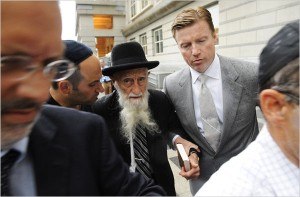 UPDATE 24 July 2009: Sweeping federal probe nabs crooked politicians & alleged black-market kidney peddler:
UPDATE 24 July 2009: Sweeping federal probe nabs crooked politicians & alleged black-market kidney peddler:
Most of the Jewish leaders busted were accused of laundering the snitch’s dirty money through their charities, which they also used to mask ill-gotten gains from the sale of fake Gucci and Prada bags.
The most outrageous arrest was that of Levy-Izhak Rosenbaum, 58, of Brooklyn, who authorities say would buy kidneys from vulnerable people in Israel for $10,000, then turn around and sell them for $160,000.
The takedown can be traced back to one man, a confidential informant identified in published reports as developer Solomon Dwek, who was charged with defrauding a bank of millions in 2006.
Dwek apparently offered the feds to turn on rabbis – who stunningly still dealt with him even though it was well known in their community that he had been charged by the government.
Dwek told the targets he was in bankruptcy and interested in hiding his assets. He laundered $3 million since June 2007.
One of the launderers introduced Dwek to a Jersey City building inspector who, authorities say, took a $20,000 bribe and kicked off the public corruption portion of the probe.
Over and over, politicians and candidates solicited and accepted bribes to grease the wheels for Dwek, who claimed he needed building permits and other approvals, authorities said.
It was in the course of the money-laundering prong of the probe that the informant came across Rosenbaum, 58, who was purportedly in the real estate business but actually makes money trafficking kidneys, officials said.
For a decade, prosecutors said, Rosenbaum would buy kidneys from vulnerable people abroad – in Israel and elsewhere – for $10,000, then turn around and sell them for $160,000.
Raids also went down at smaller “cash houses” run by associates of the rabbis throughout Brooklyn, such as a beeper store and a charity called Bnoth Jerusalem above a paint store in Williamsburg.
The feds say Mordchai Fish, a rabbi at Congregation Sheves Achim, and his brother, Lavel Schwartz, laundered nearly $600,000 for the informant, accepting his check and giving him cash after taking a 15% cut.
Fish’s lawyer, Michael Bachner, said the informant “used his closeness and the sterling reputation of his family to manipulate my client, who trusted him.”
What was the basis for that trust?
Meet the flimflamming informant, Solomon Dwek, behind the busts:
The son of a prominent New Jersey rabbi, Solomon Dwek brought shame on his tight-knit Syrian Jewish community when he was arrested for bank fraud in 2006.
That pales next to the shocking mission he undertook – exposing his community’s top rabbis as a ring of accused money launderers and bringing down nearly two dozen Jersey pols as corrupt.
For years, Dwek, 36, had his hands in hundreds of real estate deals and get-rich schemes.
His empire included a gambling boat, estates in Jersey and Florida, office buildings and plans to build high-rises just across the river from Manhattan.
It all came tumbling down when he was accused of bouncing a $25 million check.
He appears to have gone from full-time mini-mogul to a very busy federal snitch after that – even as he filed bankruptcy and was besieged by creditors.
Dwek is the observant son of Rabbi Isaac Dwek, leader of the Syrian Jews who turned a summer getaway in Deal, N.J., into a wealthy sanctuary of Mediterranean-style mansions for their Brooklyn-based community.
The Syrian Jewish community is renowned for its charity and insularity – taking care of its own from cradle to grave but excommunicating anyone who dares to marry outside the faith.
The Syrian Jewish community is renowned for its insularity and insular charity.
While his father founded a thriving yeshiva, Dwek jumped into the world of commerce – buying properties when he was barely out of his teens.
In the decade that followed, he built a real estate empire based in Monmouth County – and a reputation as a generous benefactor.
His world collapsed in 2006, when he reportedly deposited a worthless $25 million check at a bank’s drive-through window, then withdrew almost $23 million against it.
The cash-strapped Dwek soon filed for bankruptcy after being charged with fraud. Angry crowds of creditors jammed a New Jersey courtroom, desperate to recover some $400 million they lost.
Even after he was known to be in dire legal trouble, though, top rabbis in Brooklyn and New Jersey huddled with Dwek to plot money laundering crimes, authorities said.
Anthropologist’s ‘Dick Tracy moment’ plays role in arrest of suspected kidney trafficker:
The Brooklyn man arrested Thursday for dealing in black-market kidneys was identified to the FBI seven years ago as a major figure in a global human organ ring.
Levy-Izhak Rosenbaum’s name, address and even phone number were passed to an FBI agent in a meeting at the Roosevelt Hotel in Manhattan by a prominent anthropologist who has been studying and documenting organ trafficking for more than a decade.
Nancy Scheper-Hughes of the University of California, Berkeley, was and is very clear as to Rosenbaum’s role in the ring.
“He is the main U.S. broker for an international trafficking network,” she said.
Her sources include a man who started working with Rosenbaum imagining he was helping people in desperate need. The man then began to see the donors, or to be more accurate, sellers, who were flown in from impoverished countries such as Moldova.
“He said it was awful. These people would be brought in and they didn’t even know what they were supposed to be doing and they would want to go home and they would cry,” Scheper-Hughes said.
The man called Rosenbaum “a thug” who would pull out a pistol he was apparently licensed to carry and tell the sellers, “You’re here. A deal is a deal. Now, you’ll give us a kidney or you’ll never go home.’ “
Rosenbaum wasn’t simply “organ trafficing”. He was extorting organs from misled and desperate victims and reselling them for a profit. He was an aggressive middleman.
Who were the doctors, on both ends, who Rosenbaum worked with?
The New York Times has already moved beyond reporting the facts and has begun the sympathetic dissembling and apologetics. Syrian Sephardic Communities Shaken by Charges Against Saul Kassin – NYTimes.com:
David G. Greenfield, executive vice president of the Sephardic Community Federation, a group representing the approximately 100,000 Sephardim in Brooklyn, Manhattan and New Jersey, said in a statement, “The community is shocked and saddened by these allegations, which go against every value and teaching the community holds dear.”
He added, “If over time these allegations are proven, we must remember that these are the isolated actions of a few individuals.”
Actually, as the facts have been revealed it has become clear that the only people acting as isolated individuals were the corrupt non-jewish politicians. The jews involved were conspicuously networking and conspiring along ethnic lines in the commission of crimes against large numbers of isolated individual non-jewish victims.
Unique among groups within Judaism, Sephardic leaders have tried mightily to strike a difficult balance between preservation of identity and participation in the American entrepreneurial dream, said Prof. Aviva Ben-Ur of the University of Massachusetts, author of “Sephardic Jews in America: A Diasporic History.”
In 1935, Rabbi Kassin’s father issued an edict forbidding both marriage outside the faith and marriage to Jewish converts, she said.
Forbidding intermarriage with converts goes beyond preserving identity. It is an effective bar to non-jewish genes and reflects an obsession with racial purity. It didn’t stop in 1935, nor is it unique to sephardic or syrian jews. MONEY IN NEW YORK; The Sy Empire – New York Times, quoted above, was published October 14, 2007. It says:
The original Edict was a document signed by five dignitaries. Since then, it has been reaffirmed in each generation by a progressively larger number of signatories. The newest version, issued last year, was signed by 225 rabbis and lay leaders, testimony to the growth of the community and the enduring power of the Edict.
The facts so far: A check-kiting jewish real-estate mogul (Solomon Dwek) who defrauded investors out of $400 million rats out a conspiracy of top jewish rabbis (Eliahu Ben Haim, Saul Kassin, Edmund Nahum, Mordchai Fish) laundering millions more to, among other things, mask ill-gotten gains from the sale of fake bags, likely to non-jews, for a decade or more, and a jewish organ thief (Levy Itzak Rosenbaum), preying on non-jews in Moldova, Brazil, and South Africa, operating for more than seven years. The check-kiter’s bribery of non-jewish government officials has been going on for at least three years.
Somehow when the story broke it was all about the corrupt non-jewish government officials.
How many more real-estate moguls like this go undisturbed in their criminal activities, diverting a fraction of the blood money gained from enabling the genocidal immigration/White-flight pyramid scheme toward paying off crooks in government to grease the skids, tapping for support an ethnic network with access to vast funds, up to their self-righteous “religious community leader” yarmulkes in their own fraud? My guess is you can find them in Florida, Texas, California, Arizona, Massachusetts, … all over the US.
As a variation on the theme consider the orthodox ashkenazi lubavitcher jews (who according to the NYT are completely different) in Postville, Iowa. Or (another completely different) jewish Wall Street zionist philanthropist pyramid swindler Bernie Madoff, head proprietor of The Jewish Bond.
Covering these events we have our fearless watchdog media, who will do their best to help end the career of anyone who says anything disparaging about jews, led in part behind the scenes by a cabal brimming with jews who are at this very moment likely desperately brainstorming positive or distracting spin for this story.
How to blame this all on “the anti-semites” and “age-old canards”?
UPDATE #2, 24 July 2009: Bid Rig III News Release & Addendum(.pdf), from the DOJ, details the money laundering mechanics.
The criminal complaint documents are online as well.
UPDATE #3, 24 July 2009: How the FBI used a rabbi’s son to crack massive U.S. corruption case – Haaretz:
In spite of his central role in building one of the largest corruption and money-laundering cases in years, it’s not certain how rosy Dwek’s future will be. After selling nearly 350 of his 400 properties for a sum of around $30 million, Dwek has still not come close to covering his debts, which stand at hundreds of millions of dollars.
Developer Became Secret Witness – WSJ.com:
Mr. Dwek was charged by the Federal Bureau of Investigation with defrauding PNC Bank out of $25 million, of which $22.2 million was allegedly transferred to a different bank to pay off loans. He also was sued by dozens of former investors and partners including an uncle, Joseph Dwek. They claim he didn’t deliver promised returns or, in some instances, put his name on the title of properties that had been promised to others.
Mr. Dwek, 36 years old, was well known in the Syrian Jewish community as a philanthropist and head of the Deal Yeshiva, a Hebrew school in Deal, N.J. Mr. Dwek’s father, Isaac Dwek, is a prominent rabbi in the community and founder of the school. The close-knit nature of the community and Isaac Dwek’s status as a respected rabbi allowed Solomon Dwek to win the trust of many investors, said Mr. Kearney, who added that investors were promised returns as high as 20%.
Respected judeo-philanthropist leverages respect, trust and a willingness to lie to pry hundreds of millions of dollars loose from “investors” who thought they’d get 20% returns. Hmmmm. Where have we heard this story before?
Here’s a relatively mild sample of a self-righteous anti-anti-semitic reaction from a rabbi named Brad Hirshfield. Jew-Baiting or Good Journalism at NJ Star-Ledger? – Windows & Doors:
This may be a big deal, but the headline and the story don’t match – where is the info on the rabbis? This kind of coverage actually borders on Jew-baiting, and it potentially says something at least as ugly about the author/editors as it does about those who committed any crime. Consider the following quote found on the paper’s website and carried on CNN:
The arrests resulted from an FBI and Internal Revenue Service probe “that began with an investigation of money transfers by members of the Syrian enclaves in New York and New Jersey,” the newspaper said on its Web site, NJ.com. Those arrested Thursday “include key religious leaders in the tight-knit, wealthy communities,” the report said.
“Enclaves”? “Tight-knit, wealthy communities”? Could it be that the Star Ledger harbors deep resentment against Jews who they see as over-privileged, stand-offish people who operate as a law unto themselves?
Is this the paper’s moment to celebrate how “those people” will now get their comeuppance? If not, why describe the community in classically anti-Semitic ways instead of calling out the specific leaders who broke the law, violated the religious rules of their own community and should be punished to the full extent of the law for any wrongdoing they committed?
The rabbi sees similarities between the facts of this case and “classical” descriptions of previous jewish wrongdoing because there actually are similarities. He’d rather imagine “anti-semitism” is the cause rather than a reaction. Other reactions are evident in the many media accounts I’ve quoted above. The ones that don’t obscure, downplay, or whitewash simply state the facts as plainly as possible.
UPDATE 28 July 2009: Syrian Community Moving To Limit Damage After Sting. It’s a two part plan.
First, there’s the narrative for the gullible goyim:
[Morris] Bailey [chairman of the Sephardic Community Alliance] added, “Any individual action, especially when so isolated from the majority norm, does not in any way reflect on our traditional values; those being a lifelong commitment to Torah, family and society at large.”
This is reality-inverting propaganda. The syrian jewish community is described as insular because their “traditional values” include consciously isolating themselves from “majority norms” and “society at large”.
Here’s the other, inwardly aimed half of the plan:
In all, 15 people were charged in the money-laundering scheme, all but two of them from Jewish communities in Brooklyn. On a Jewish radio program Saturday night a former assemblyman from Borough Park, Sam Hirsch, said Dwek should face stiff retribution because of his role as an informant, the halachic concept of a moser.
“This person should have been killed,” said [former assemblyman from Borough Park, Sam] Hirsch, when asked by “Talkline” host Zev Brenner whether Dwek’s acts were comparable to those of Bar Kamsa, the man related in the Talmud as having incited tensions between the Romans and Jews leading to the destruction of Jerusalem in 70 CE. Hirsch then said that Dwek and other informants should be ostracized from the community.
‘Medieval Minds in Armani Designs’: Inside the Syrian-Jewish Community – Forward.com describes SJ “traditional values”:
Solidarity is how this community has survived intact even as other, less insular Sephardic communities — the Greeks, for example — have scattered and assimilated in America. Its communal trajectory has traced the reverse course of Ashkenazic Jewry, where each generation of the mainstream has been more assimilated than the last. With the Syrian Jews, each generation has been more insular.
It is an insularity reinforced in no small part by a rabbinic edict from the 1930s — since updated and strengthened — that, in its current interpretation, forbids community members from marrying converts to Judaism, even if validly converted by an Orthodox rabbi elsewhere. It is an insularity that has grown even as their wealth has burgeoned due to their elaborate, family-linked network of mutual aid in business no less than philanthropy.
The “halachic concept of a moser” is not limited to insular jewish sects.
The Talmudic Law of the Moser:
Informing on Jews, contends Hagaon Rav Hutner, is an action that goes against the essence of Jewish communal standards. It is a behavioral pattern that is simply not Jewish. This is not what Jews do. As such, the informer (mosser) is excluded from Klal Yisrael because of his refusal to conform to the moral character of the Jewish people (Pachad Yitzhak, Pesach, Ma’amar 63:5).
Informing On Fellow Jews:
Even though Jewish law expects people to observe the laws of the land, and even imposes that obligation as a religious duty, the Talmud recounts – in a number of places – that it is prohibited to inform on Jews to the secular government, even when their conduct is a violation of secular law and even when their conduct is a violation of Jewish law. While there are a number of exceptions to this prohibition (which are explained further in this section), the essential halacha was that Jewish law prohibits such informing absent specific circumstances. Even is secular government were to incorporate substantive Jewish law into secular law and punish violations of what is, in effect, Jewish law, Jews would still be prohibited from cooperating with such a system.
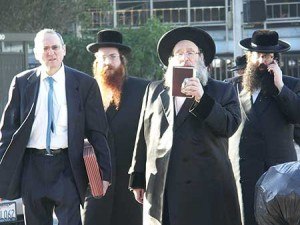 The news and commentary below could easily have been appended to Jewish Supremacists Bribing Politicians and Laundering Proceeds of Criminal Activity or Lies and the Lying Liars Who Tell Them. Two weeks ago I really had no idea how common jewish fraud was. Now I find a simple news search for “rabbi” regularly turns up more.
The news and commentary below could easily have been appended to Jewish Supremacists Bribing Politicians and Laundering Proceeds of Criminal Activity or Lies and the Lying Liars Who Tell Them. Two weeks ago I really had no idea how common jewish fraud was. Now I find a simple news search for “rabbi” regularly turns up more.
